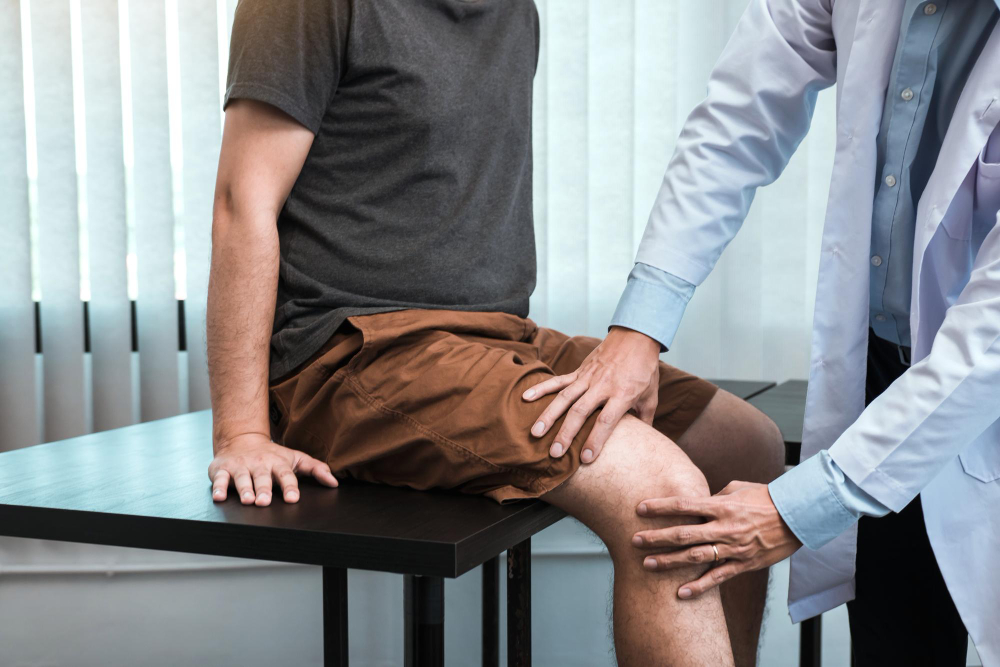A patella dislocation occurs when the kneecap shifts out of its usual groove, causing pain and swelling. It might make it tough for you to straighten your knee. Knowing about this condition can help you understand how it affects knee movements and why it’s important to treat it quickly.
The kneecap, or patella, usually glides within a groove in the thigh bone. When it moves out of this groove, that’s when you have a patella dislocation. This injury can result in a swollen knee and make walking or extending the knee hard without a lot of pain.
Common signs of a dislocated kneecap include a visibly out-of-place kneecap, swelling, and difficulty in moving the knee. Early diagnosis is important to avoid future problems.
The Mechanics of Patella Dislocation and Its Causes
Your knee is a complex joint. It includes an extensor mechanism where the kneecap plays a big role. Certain movements or direct hits to the knee can cause a dislocation. Imagine doing a quick twist in a game, and suddenly, your knee won’t cooperate. That’s what might happen with a patella dislocation.
There are several causes of patella dislocation:
- Weak thigh (quadriceps) muscles
- Previous injuries or recurring knee issues
- Overdoing it in sports without enough rest
- Genetic factors that might make your ligaments more stretchy
Understanding what makes a patella dislocation likely helps you manage and prevent it early on.
You might be more at risk if you’re young, engage in high-impact sports, or already have knee troubles. Recognizing these risk factors can be a game-changer in preventing dislocations.
Navigating Treatment: From Immediate Response to Recovery
If you experience a patella dislocation, acting quickly is crucial. Avoid trying to pop it back yourself; instead, get medical help.
Here’s what to do: 1. Stop using the knee immediately to avoid more damage. 2. Apply ice to reduce swelling and numb the pain. 3. Elevate the leg if possible and rest.
When it comes to patella dislocation treatment, non-surgical methods are often explored first. Physical therapy helps strengthen the muscles around the knee, keeping the kneecap in place. Braces can offer support and help hold the kneecap stable.
Exercises are another strong tool; they’re designed to help balance and strengthen your knee’s support system. Doing these can aid in faster recovery and even reduce chances of future dislocations.
Sometimes, surgery is necessary, especially if the problem keeps popping up. During surgery, doctors might stabilize the kneecap. Post-surgery, expect a patella dislocation recovery time of several weeks. After the operation, physical therapy helps regain full knee function.
Preventing Patella Dislocation: Tips and Misconceptions
Want to avoid a patella dislocation? Here are some prevention tips: – Strengthen leg muscles regularly—resistance exercises are great. – Stretch and warm-up before exercising or playing sports. – Wear protective knee gear if you’re engaging in activities with a risk of injury.
Despite what some think, a dislocated patella isn’t always due to a major accident. It can happen with a simple twist or small misstep. And while genetics play a part, strength and care often win out over predispositions. Remember, accurate info and care stand stronger than myths in keeping your knees healthy.
